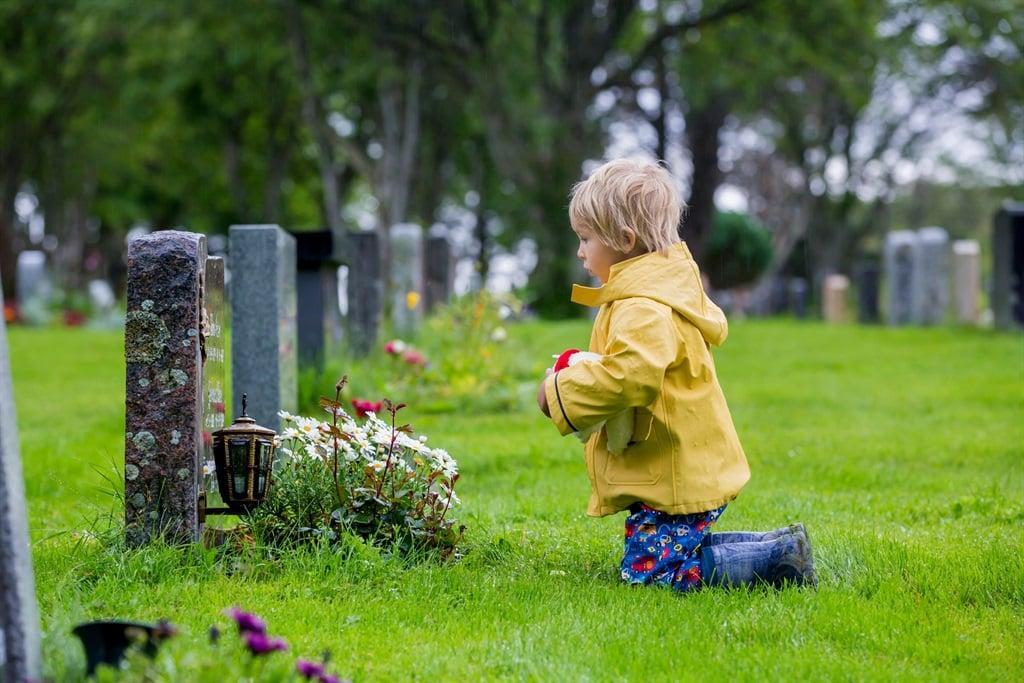Dr Helena Dolny and Mapi Mhlangu
Africa-Press – Zambia. Having recently returned to the newsroom environment, I’m struck by the high level of exposure young children have to death. The recent tragedies surrounding the death of pupils in incidents like the Carletonville scholar transport crash, which claimed the lives of 11 pupils, and another scholar bus accident in Mpumalanga that tragically took four more lives, have highlighted the urgent need for dialogue about grief in children.
Parents and community members are sharing their experiences, revealing how these events evoke a spectrum of emotions in their children. One mother shared how her child keeps saying he cried to save his sister, reflecting a profound sense of guilt and emotional turmoil that can result from such tragedies.
It’s equally poignant to witness children wearing their school uniforms at the funerals of their classmates, their tear-filled eyes telling stories of loss and confusion. As I observe these young mourners, I often wonder: How do they process what they are going through? At what point should we engage children in conversations about death?
The nature of childhood grief
Grief is a universal experience, but children perceive it differently than adults.
According to Dr Alan Wolfelt, an educator on grief: “Children do not grieve as adults do. Their understanding of death evolves as they grow. They may oscillate between moments of deep sorrow and playfulness, as though toggling back and forth between two worlds.”
This perspective is crucial for parents and educators when approaching conversations with children regarding loss. One of my earliest memories of death came when we lost our family dog. The process of burying him was a visceral introduction to the concept of loss. Yet, I don’t recall experiencing the death of someone close to me until later in life during the violent upheavals in KwaZulu-Natal. But family history suggests many relatives passed when I was young, but whether I blocked those experiences or simply lacked the comprehension to understand death is unclear.
In witnessing the grief unfolding in today’s youth, one must ask: How are our children processing so much loss, and how can we support them through these challenging times?
The impact of exposure to death
Research indicates that children who experience a significant loss may exhibit changes in behaviour, academic performance, and social interactions. Dr David Schonfeld, director of the National Center for School Crisis and Bereavement, states, “When children experience the death of someone important to them, it can trigger feelings of insecurity, fear, and anxiety. They may struggle to articulate their emotions, leading to withdrawal or outbursts.”
Given the societal context of increased exposure to loss—whether through accidents, illness, or violence—it’s essential for parents, teachers, and communities to foster open lines of communication about grief. Each child will respond differently based on their age, personality, and past experiences with loss.
Parents can begin introducing the subject of death to their children at a young age, often as early as pre-school years (around ages 3-5). At this stage, children are naturally curious about life and death, even if they don’t fully understand the concepts.
Here are some guidelines on how to approach the topic:
1. Follow their lead: Children may ask questions about death when they’re ready. Pay attention to their prompts and be open to discussing their thoughts and feelings.
2. If a pet dies or there is a loss in the family, use that opportunity to talk about it. Share your feelings and encourage them to express theirs.
3. Let children know that it’s okay to feel sad, confused, or even angry about death. Discussing emotions openly helps them understand that grief is a natural part of life.
I recently asked a friend who faced the unimaginable challenge of losing her husband when their son was just three years old, how she explained death to a toddler.
She recounted:
“I was advised to whisper the truth about his dad’s passing softly into his ear. At that moment, it felt abstract—something he couldn’t truly grasp. Yet, it became a ritual for us. As time went on, he began to ask questions, and I found myself repeating the story over and over, each time trying to make sense of it together. Then one day, while playing outside, he noticed an ant that had died. His innocent curiosity sparked a profound moment: ‘Is this what happened to Daddy?’ he asked. I nodded, and he continued, ‘That ant won’t be able to play with his friends or find food like the others anymore, will he?’ Again, I affirmed his understanding. I explained that, just like the ant, humans don’t come back, but we have funerals to say goodbye. In that simple exchange, I realised he was searching for a way to comprehend the complex idea of loss, connecting it to the world around him. It was a powerful reminder that even in the darkest moments, children can illuminate our understanding of life and death in unexpected ways.”
Source: Life
For More News And Analysis About Zambia Follow Africa-Press







